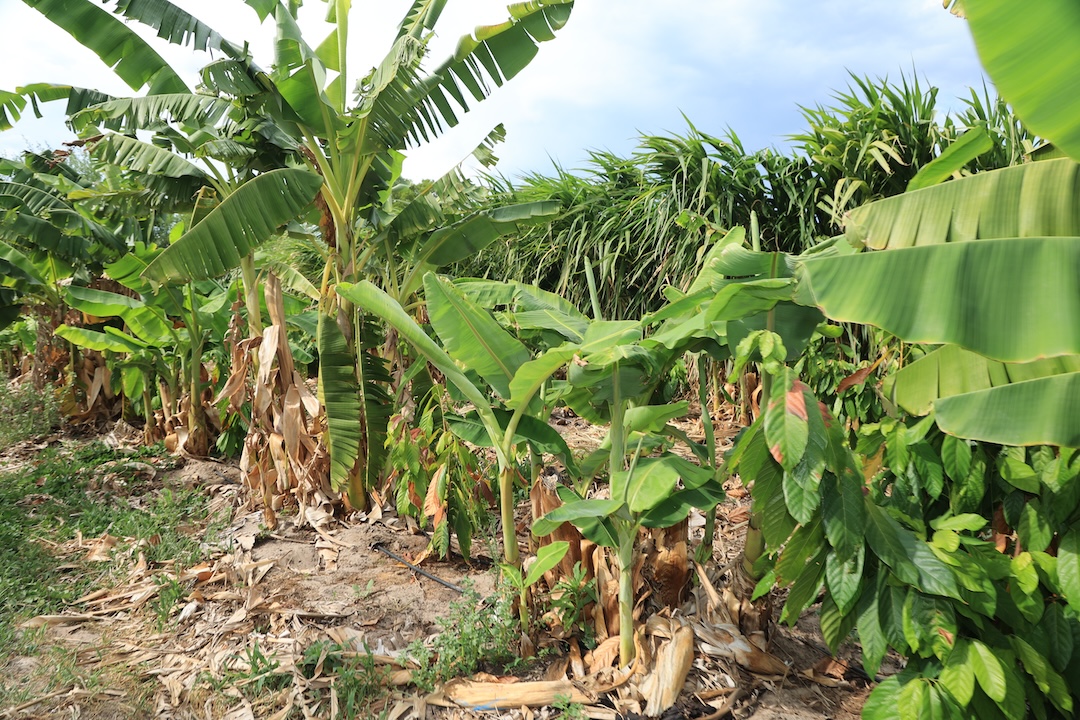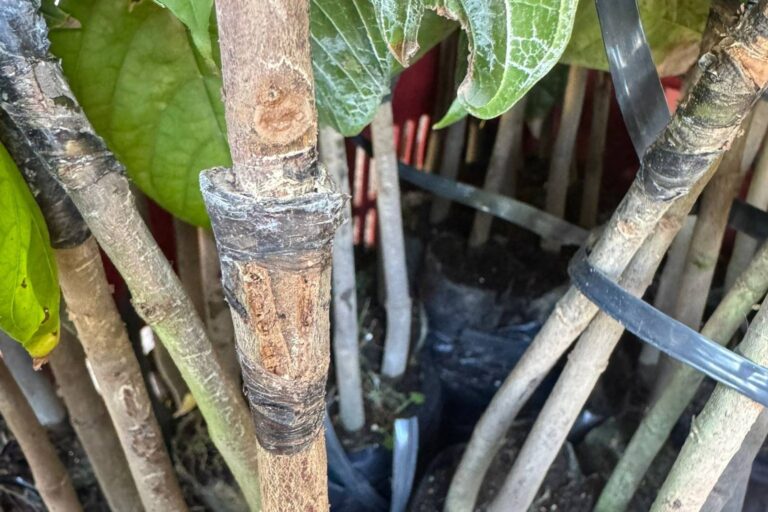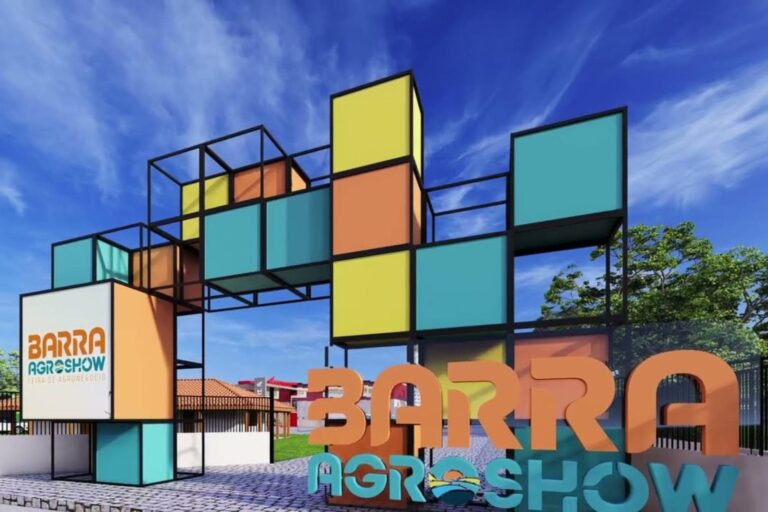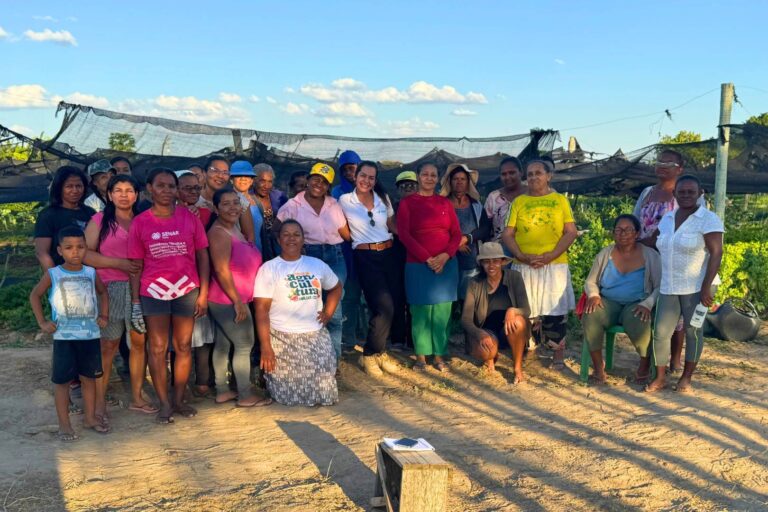In this article, we’ll review the complementary nature of cacao and coconut, including the benefits of intercropping, and our experiments with additional shade-providing trees to support cacao seedlings and young plants.
We hope this article can help other farmers and growers who are seeking ways to improve land use and sustainability, while also increasing the output and profitability of their farm. When done correctly, intercropping can give you the best of both worlds.
The Benefits of Intercropping Cacao and Coconut
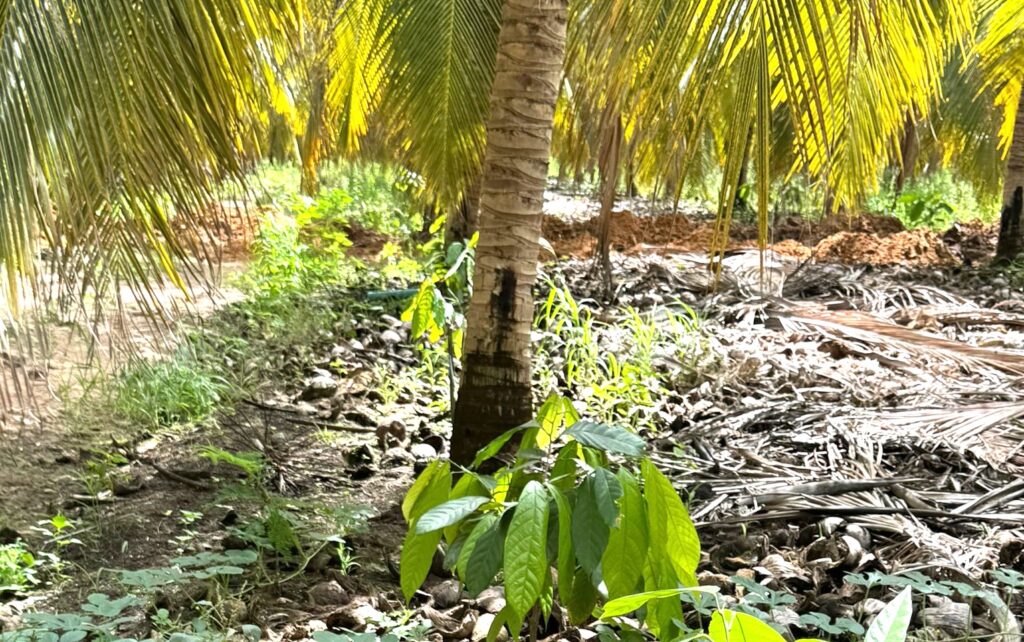
Complementary Growth Patterns
Cacao and coconut are ideal companions in our agroforestry system. Cacao plants thrive in the shade naturally provided by the taller coconut palms. This relationship mimics the cacao’s natural habitat, the understory of tropical rainforests, where it grows under the canopy of taller trees. By planting cacao beneath coconut trees, we create an environment that closely resembles its native conditions, promoting healthier and more robust growth.
Enhanced Soil Health
Intercropping cacao and coconut also contributes to improved soil health. The diverse root systems of these plants interact with the soil in different ways, reducing the risk of soil erosion and nutrient depletion. Coconut trees have deep roots that bring up nutrients from the lower layers of the soil, while cacao plants have shallower roots that access nutrients closer to the surface. This complementary root system ensures a more balanced and nutrient-rich soil profile, benefiting both crops.
Efficient Land Use
Growing cacao and coconut together also maximizes land use efficiency. Instead of dedicating separate areas for each crop, we can cultivate both in the same space, increasing our overall productivity without expanding our farm’s footprint. This approach aligns with our commitment to sustainable farming by making the most of our available resources and returning greater profitability per hectare.
Creating a Resilient Ecosystem
Biodiversity and Pest Management
Intercropping cacao and coconut enhances biodiversity on our farm, creating a more resilient ecosystem. A diverse agricultural system is less susceptible to pests and diseases compared to monoculture plantations. The presence of various plants attracts a wider range of beneficial insects and wildlife, which naturally help control pest populations. This reduces our reliance on chemical pesticides, promoting a healthier environment for our crops and surrounding wildlife.
Climate Resilience
The complementary nature of cacao and coconut also improves our farm’s resilience to climate change. Coconut palms provide much-needed shade for cacao plants, protecting them from excessive heat and sun exposure. This microclimate regulation is particularly crucial in the face of rising temperatures and changing weather patterns. Additionally, the presence of coconut trees can act as windbreaks, reducing the impact of strong winds on our cacao plants and preventing damage.
Experimenting with Shade Trees

Supporting Cacao Seedlings
In addition to intercropping cacao and coconut, we are experimenting with planting various shade trees to support the growth of cacao seedlings and young plants. Shade trees play a vital role in protecting cacao plants from harsh sunlight, especially during their early stages of growth. These trees create a favorable microenvironment that fosters healthy development and reduces stress on the young plants.
Species Selection
We carefully select shade tree species that are compatible with cacao and coconut. Some of the trees we are experimenting with include mahogany and other hardwood trees. We are also exploring species known for their nitrogen-fixing abilities, which enrich the soil with essential nutrients and promote healthier cacao growth. Our ideal candidates are species that have a manageable height and canopy structure, ensuring they provide adequate shade without competing excessively for resources. It’s a delicate balancing act and we are learning more as we consult with local experts to develop the most effective intercropping species for our farm.
Conclusion
At Peirot, growing cacao and coconut together exemplifies our dedication to sustainable agriculture and innovative farming techniques. This intercropping system not only enhances the productivity and resilience of our farm but also creates a more balanced and healthier ecosystem. By experimenting with additional shade trees and implementing sustainable practices, we are paving the way for a future where our crops thrive in harmony with nature. As we continue to explore and refine these methods, we remain committed to fostering a sustainable and bountiful farm for generations to come.

